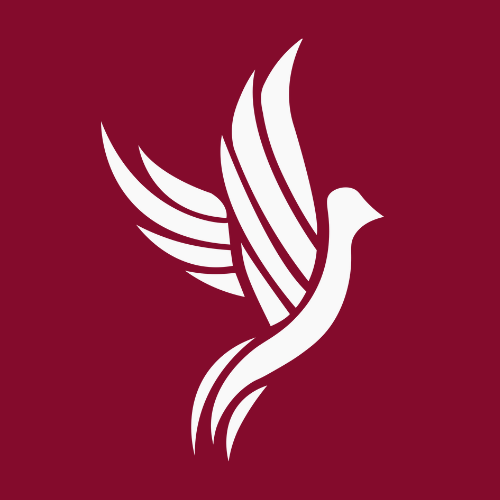As a result of the pandemic, Loyola collected and spent less money during the fiscal year 2021.
Loyola’s 990 Tax Forms Reveal Dramatic Effect COVID-19 Had on University Finances
Loyola collected less revenue and spent less money during the fiscal year 2021 (FY21) as a result of the COVID-19 pandemic, according to the university’s Form 990.
Overall, Loyola brought in around $813.5 million in total revenue during 2021 — which represents a decrease from the previous year’s total of $863.4 million, according to the Form 990. Total revenue is made up of all of the contributions, grants, program service revenue, investment income and other revenue from FY21.
The Form 990 is an annual report filed with the Internal Revenue Service (IRS) and is their main tool on gathering information and promoting compliance with tax exempt organizations like Loyola, according to the IRS. FY21 is the year-long period beginning July 1, 2020 and ending June 30, 2021.
Teresa Krafcisin, Loyola Financial Services’ senior associate vice president and controller, said the primary challenge of FY21 was the closing of dorms and campus buildings after March 2020 and the eventual limited reopening, The Phoenix previously reported.
“The fiscal year 21 is really, really challenging, because the level of revenue from the residence halls and from the meals, the meal plans, the room and board revenue, was essentially non-existent because the buildings weren’t open,” Krafcisin said.
From 2016 to 2020, Loyola collected over $371 million in grants and gifts, but in 2021 the school received nearly $7 million less than it had in 2020, according to the Form 990.
The university brought in $654.7 million from tuition and fees in 2021, a $7.7 million decrease from 2020. Krafcisin said the decrease in this value was most likely caused by the fact that no student activities were being held on campus because of COVID-19.
“My recollection, but I would want to validate this, is that the decrease in the fees is primarily driven by the fact that the university didn’t charge a student activity fee,” Krafcisin said. “Because there was no substantial on campus presence during the school year ‘21.”
The number one paid employee at Loyola in FY21 was men’s basketball coach Porter Moser, who earned a salary of $1,007,308, according to the Form 990. In 2021, Moser left Loyola for the University of Oklahoma, The Phoenix reported.
Second on the list is former president Jo Ann Rooney, who in 2021 had a salary of $826,780. Rooney left the university in 2022 and was replaced by Mark C. Reed, The Phoenix reported.
After Moser and Rooney, three of the top five highest paid employees in FY21 were professors, including Robert Kolb, a professor in the Quinlan School of Business, who made $832,599 and was the third highest paid employee, according to the Form 990.
These professors were able to top the list through a one-time voluntary transition incentive program, according to Krafcisin. Eligible tenured faculty who voluntarily left Loyola through this program announced in August 2019 received a cash bonus twice the size of their base academic salary as of Dec. 31, 2019, according to the Form 990.
In 2021, Loyola spent $673,615 more on advertising than in 2020, according to the Form 990.
Krafcisin said the majority of the advertising was enrollment marketing to a variety of audiences including prospective undergraduate and graduate students.
Krafcisin said she did not have an answer as to why the university spent more money on advertising despite the decrease in total revenue.
The university received $335,812 in interest from student loans in FY21, $80,996 less than in 2020. These payments come from past recipients of Federal Perkins Loans who have an obligation to pay Loyola who then pays the federal government, according to Krafcisin. Even though the Perkins Loan Program ended in 2017, past recipients are continuing to pay interest to Loyola on student loans.
The top five highest paid Loyola contractors were paid a total of $59.8 million in FY21. In order of highest to lowest, the contractors were Power Construction Company LLC, B. Stromberg Construction Company, The Millard Group, Aramark Corporation and Orbis Educational Services Incorporated.
Aramark Corporation, Loyola’s main food service contractor, was compensated a total of $7.2 million in 2021, which is $15.8 million less than in 2020, Krafcisin said COVID-19 was the cause of this dramatic decrease.
“During fiscal year 21, the university’s residence halls had extremely limited occupancy,” Krafcisin said. “As a result, there was limited service not only for the residence halls, but also all of the room and board. So that was the primary driver for the decrease year over year.”
Loyola had $252.8 million in investments in Central America and the Caribbean, $27.9 million in investments in Europe and $18.8 million in investments in East Asia and the Pacific in FY21. Krafcisin said these amounts were a part of Loyola’s investment portfolio managed by Katharine Wyatt, Loyola’s chief investment officer.
In an email to The Phoenix, Wyatt said these numbers refer to where Loyola’s investment fund is domiciled or resides. Loyola has several investments residing outside of the U.S. and through this, receives an exemption through trading safe harbor statutes from paying unrelated business income taxes and general taxation, according to Wyatt. Although these funds are kept overseas, they are comprised of securities traded in the U.S. and abroad, according to Wyatt.
“The use of these structures is a very common and typical structure for tax-exempt non profits,” Wyatt said. “It has been in place for many years, even decades. I don’t know when Loyola first started using these, but tax law has provided for these sort of vehicles for tax exempt institutions for a long time.”
-

Hunter Minné wrote his first article for The Phoenix during just his first week as a first-year at Loyola. Now in his third-year on staff and second as a Deputy News Editor, the Atlanta-native is studying journalism, political science and environmental communication alongside his work at the paper. For fun he yells at geese.
View all posts




